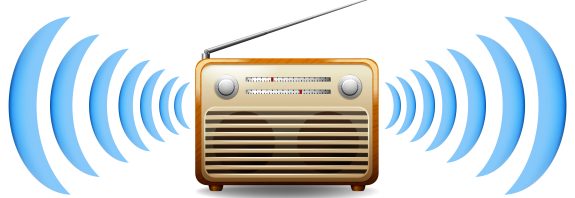When Did Wi-Fi Appear?

When Did Wi-Fi Appear? Wi-Fi is a wireless standard for data transmission between devices that has become essential for many people in our modern world. This technology emerged in 1997 and has since become an indispensable part of life for countless individuals globally.
The history of Wi-Fi traces back to 1985 when the U.S. Federal Communications Commission (FCC) allocated frequency bands for wireless devices.
In 1991, Australian scientist John O’Sullivan invented a wireless technology called “Orthogonal Frequency Division Multiplexing” (OFDM), which became the foundation for the development of Wi-Fi.
When Did Wi-Fi Appear?
In 1997, the Wi-Fi Alliance was established—a group of companies dedicated to advancing Wi-Fi technology. At that time, companies such as Apple, 3Com, and Aironet (later acquired by Cisco) became members of the Wi-Fi Alliance. They collaborated to develop a technology that would become the standard for wireless networks.
In 1999, the first Wi-Fi standard, IEEE 802.11b, was adopted. This standard allowed data transmission at speeds of up to 11 megabits per second (Mbps). Subsequently, the 802.11a and 802.11g standards were introduced, offering higher data transfer speeds and improved compatibility with other devices.
Today, Wi-Fi has become a necessity for many people worldwide. It enables wireless internet connectivity and facilitates data transmission between devices. Wi-Fi has also become integral to businesses, allowing enterprises to provide wireless internet access and transfer data between various devices. Many urban areas and restaurants offer free Wi-Fi to customers, making the internet accessible to everyone.
Thanks to Wi-Fi technology, we can easily connect our smartphones, tablets, laptops, and other devices to the internet without wires. Wi-Fi provides fast and convenient internet access, regardless of your location.
However, like any technology, Wi-Fi has its limitations and challenges. One of the primary drawbacks is that the signal can be disrupted by walls and other obstacles, potentially reducing data transfer speeds. Additionally, Wi-Fi usage can pose security risks, as malicious actors may intercept traffic and gain access to sensitive information.
In response to these issues, developers are continuously working to improve Wi-Fi technology
Newer versions of Wi-Fi standards offer faster data transmission and greater resistance to interference. The use of encryption and other security measures can also enhance safety when using Wi-Fi.
When Did Wi-Fi Appear? Overall, Wi-Fi technology emerged in 1997. Since then, it has become an essential part of life for many people around the world. It allows us to easily connect our devices to the internet and transfer data. Wi-Fi access points can be found in nearly every corner of the globe—airports, cafes, hotels, parks, and other locations. Wireless internet access has the power to transform how we work and communicate, keeping us connected to the world.
Nowadays, many devices come equipped with built-in Wi-Fi modules, enabling them to connect to the internet and exchange data wirelessly. This applies not only to personal computers but also to smartphones, tablets, televisions, and other electronic devices.
However, alongside the convenience of Wi-Fi, there are some potential health-related concerns. Some individuals report discomfort from prolonged exposure to Wi-Fi access points due to the electromagnetic waves they emit. These waves could potentially be harmful to health, especially in high doses. However, numerous scientific studies have found no significant evidence that Wi-Fi usage poses a health risk.
To ensure the security and reliability of Wi-Fi networks, encryption methods and protections against hacking attacks are constantly being refined. However, it’s worth noting that network security depends not only on the technology itself but also on how it is used. Adhering to security practices, such as using strong passwords and restricting network access to trusted individuals, is crucial.
Everyone using Wi-Fi should be aware of its limitations
For instance, wireless networks have a limited range, making them unavailable in certain locations. Additionally, data transfer speeds over Wi-Fi may be slower than those of wired networks.
In summary, Wi-Fi technology is a vital component of the modern world, enabling us to stay connected to the internet and exchange data wirelessly. Despite some potential issues related to security and health, Wi-Fi remains one of the most convenient and accessible technologies for internet connectivity. Over the past two decades, Wi-Fi has come a long way, and we can anticipate even greater advancements in the future.









